References
2001 by Royal Forex. All right reserved. www.royalforex.com
4
1. Common knowledge about the trading on Forex
1.1. Foreign exchange as a part of the world financial market
Forex – What is it? The international currency market Forex is a special kind of the world financial market. Trader’s purpose on the Forex to get profit as the result of foreign currencies purchase and sale. The exchange rates of all currencies being in the market turnover are permanently changing under the action of the demand and supply alteration. The latter is a strong subject to the influence of any important for the human society event in the sphere of economy, politics and nature. Consequently current prices of foreign currencies evaluated for instance in the US dollars fluctuate towards its higher and lower meanings. Using these fluctuations in accordance with a known principle “buy cheaper – sell higher” traders obtain gains. Forex is different in compare to all other sectors of the world financial system thanks to his heightened sensibility to a large and continuously changing number of factors, accessibility to all individual and corporative traders, exclusively high trade turnover which creates an ensured liquidity of traded currencies and the round - the clock business hours which enable traders to deal after normal hours or during national holidays in
their country finding markets abroad open.
Just as on any other market the trading on Forex, along with an exclusively high potential profitability, is essentially risk - bearing one. It is possible to gain a success on it only after a certain training including a familiarization with the structure and kinds of Forex, the principles of currencies price formation, the factors affecting prices alterations and trading risks levels, sources of the information necessary to account all those factors, techniques of the analysis and prediction of the market movements as well as with the trading tools and rules. An important role in the process of the preparation for the trading on Forex belongs to the demo-trading (that is to trade using a demo-account with some virtual money), which allows to testify all the theoretical knowledge and to obtain a required minimum of the trade experience not being subjected to a material damage.
Short data about the origin and development of the currency exchange market. Currency trading has a long history and can be traced back to the ancient Middle East and Middle Ages when foreign
exchange started to take shape after the international merchant bankers devised bills of exchange, which were transferable third-party payments that allowed flexibility and growth in foreign exchange dealings.
The modern foreign exchange market characterized by periods of high volatility (that is a frequency
and an amplitude of a price alteration) and relative stability formed itself in the twentieth century. By the mid-1930s the British capital London became to be the leading center for foreign exchange and the British pound served as the currency to trade and to keep as a reserve currency. Because in the old times foreign exchange was traded on the telex machines, or cable, the pound has generally the nickname “cable”. After the World War II, where the British economy was destroyed and the United States was the only country unscarred by war, U.S. dollar, in accordance with the Breton Woods Accord between the USA, Great Britain and France (1944) became the reserve currency for all the capitalist countries and all currencies were pegged to the American dollar (through the constitution of currencies ranges maintained by central banks of relevant countries by means of the interventions or currency purchases). In turn, the U.S. dollar was pegged to gold at $35 per ounce. Thus, the U.S. dollar became the world's reserve currency. In accordance with the same agreement was organized the International Monetary Fund (IMF) rendering now a significant financial
support to the developing and former socialist countries effecting economical transformation. To execute these goals the IMF uses such instruments as Reserve trenches, which allows a member to draw on its own reserve asset quota at the time of payment, Credit trenches drawings and stand-by arrangements. The letters are the standard form of IMF loans unlike of those as the compensatory financing facility extends
2001 by Royal Forex. All right reserved. www.royalforex.com
5
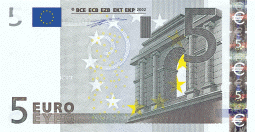

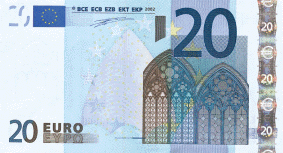
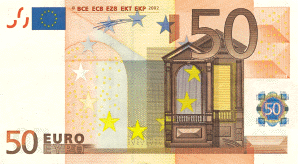
financial help to countries with temporary problems generated by reductions in export revenues, the buffer stock financing facility which is geared toward assisting the stocking up on primary commodities in order to ensure price stability in a specific commodity and the extended facility designed to assist members with financial problems in amounts or for periods exceeding the scope of the other facilities.
At the end of the 70-s the free-floating of currencies was officially mandated that became the
most important landmark in the history of financial markets in the XX century lead to the formation
of Forex in the contemporary understanding. That is the currency may be traded by anybody and its value is a function of the current supply and demand forces in the market, and there are no specific
intervention points that have to be observed. Foreign exchange has experienced spectacular growth in
volume ever since currencies were allowed to float freely against each other. While the daily turnover in 1977 was U.S. $5 billion, it increased to U.S. $600 billion in 1987, reached the U.S. $1 trillion mark in September 1992, and stabilized at around $1.5 trillion by the year 2000. Main factors influences on this spectacular growth in volume are mentioned below. A significant role belonged to the increased volatility of currencies rates, growing mutual influence of different economies on bank-rates established by central banks, which affect essentially currencies exchange rates, more intense competition on goods markets and, at the same time, amalgamation of the corporations of different countries, technological revolution in the sphere of the currencies trading. The latter exposed in the development of automated dealing systems and the transition to the currency trading by means of the Internet. In addition to the dealing systems, matching systems simultaneously connect all traders around the world, electronically duplicating the brokers' market.
Advances in technology, computer software, and telecommunications and increased experience have
increased the level of traders' sophistication, their ability to both generate profits and properly handle the exchange risks. Therefore, trading sophistication led toward volume increase.
Regional reserve countries. Along with the global reserve currency – U.S. dollar, there are also other regional and international reserve countries.
In 1978, the nine members of the European Community ratified a plan for the creation of the
European Monetary System managed by the European Fund of the Monetary Cooperation. By 1999
these countries, which constituted so-called Euro zone, have implemented the transition to the common European currency - the euro (see Figure 1.1).
The euro bills are issued in denominations of 5, 10, 20, 50, 100, 200, and 500 euros. Coins are issued in denominations of 1 and 2 euros, and 50, 20,10, 5, 2, and 1 cent.
2001 by Royal Forex. All right reserved. www.royalforex.com
6
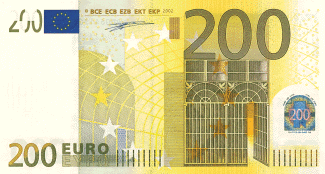
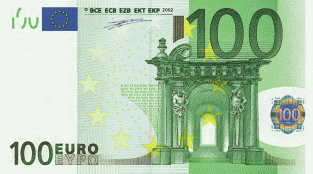

Figure 1.1. The Euro notes.
The euro is a regional reserve currency for the euro zone countries and the Japanese yen – for
the countries of South – East Asia. The portfolio of reserve currencies may change depending on
specific international conditions, to include the Swiss franc.
The role of U.S. Federal Reserve System and Central banks of other G-7 countries on
Forex. All central banks, and the U.S. Federal Reserve System (FRS) as well, affect the foreign exchange markets changing discount rates and performing the monetary operations (as interventions and currency purchases).
For the foreign exchange operations most significant are repurchase agreements to sell the same security back at the same price at a predetermined date in the future (usually within 15 days), and at a specific rate of interest. This arrangement amounts to a temporary injection of reserves into the banking system. The impact on the foreign exchange market is that the national currency should weaken. The repurchase agreements may be either customer repos or system repos.
Matched sale-purchase agreements are just the opposite of repurchase agreements. When
executing a matched sale-purchase agreement, a bank or the FRS sells a security for immediate delivery to a dealer or a foreign central bank, with the agreement to buy back the same security at the same price at a predetermined time in the future (generally within 7 days). This arrangement amounts to a temporary drain of reserves. The impact on the foreign exchange market is that the national currency should strengthen.
Monetary operations include payments among central banks or to international agencies. In addition, the FRS has entered a series of currency swap arrangements with other central banks since 1962. For instance, to help the allied war effort against Iraq's invasion of Kuwait in 1990-1991, payments were executed by the Bundesbank and Bank of Japan to the Federal Reserve. Also, payments to the World Bank or the United Nations are executed through central banks.
2001 by Royal Forex. All right reserved. www.royalforex.com
7
Intervention in the United States foreign exchange markets by the U.S. Treasury and the FRS is
geared toward restoring orderly conditions in the market or influencing the exchange rates. It is not geared toward affecting the reserves.
There are two types of foreign exchange interventions: naked intervention and sterilized inter-
vention.
Naked intervention, or unsterilized intervention, refers to the sole foreign exchange activity. All that takes place is the intervention itself, in which the Federal Reserve either buys or sells U.S. dollars against a foreign currency. In addition to the impact on the foreign exchange market, there is also a monetary effect on the money supply. If the money supply is impacted, then consequent adjustments must be made in interest rates, in prices, and at all levels of the economy. Therefore, a naked foreign exchange intervention has a long-term effect.
Sterilized intervention neutralizes its impact on the money supply. As there are rather few central banks that want the impact of their intervention in the foreign exchange markets to affect all corners of their economy, sterilized interventions have been the tool of choice. This holds true for the FRS as well. The sterilized intervention involves an additional step to the original currency transaction. This step consists of a sale of government securities that offsets the reserve addition that occurs due to the intervention. It may be easier to visualize it if you think that the central bank will finance the sale of a currency through the sale of a number of government securities. Because a sterilized intervention only generates an impact on the supply and demand of a certain currency, its impact will tend to have a short-to medium-term effect.
1.2. Risks by the foreign exchange on Forex
As it was mentioned above the trading on the Forex is essentially risk-bearing. By the evaluation of
the grade of a possible risk accounted should be the following kinds of it: exchange rate risk, interest rate risk, and credit risk, country risk.
Exchange rate risk. Exchange rate risk is the effect of the continuous shift in the worldwide market supply and demand balance on an outstanding foreign exchange position. For the period it is
outstanding, the position will be subject to all the price changes.
The most popular measures to cut losses short and ride profitable positions that losses should be kept within manageable limits are the position limit and the loss limit. By the position limitation a maximum amount of a certain currency a trader is allowed to carry at any single time during the regular trading hours is to be established. The loss limit is a measure designed to avoid unsustainable losses made by traders by means of stop-loss levels setting.
Interest rate risk. Interest rate risk refers to the profit and loss generated by fluctuations in the forward spreads, along with forward amount mismatches and maturity gaps among transactions in the
foreign exchange book. This risk is pertinent to currency swaps, forward outright, futures, and options (See below). To minimize interest rate risk, one sets limits on the total size of mismatches. A common approach is to separate the mismatches, based on their maturity dates, into up to six months and past six months.
All the transactions are entered in computerized systems in order to calculate the positions for all the dates of the delivery, gains and losses. Continuous analysis of the interest rate environment is necessary to forecast any changes that may impact on the outstanding gaps.
Credit risk. Credit risk refers to the possibility that an outstanding currency position may not be repaid as agreed, due to a voluntary or involuntary action by a counter party. In these cases, trading occurs on regulated exchanges, such as the clearinghouse of Chicago. The following forms of credit risk are known:
2001 by Royal Forex. All right reserved. www.royalforex.com
8
1. Replacement risk occurs when counterparties of the failed bank find their books are subjected to the danger not to get refunds from the bank, where appropriate accounts became unbalanced.
2. Settlement risk occurs because of the time zones on different continents. Consequently, currencies may be traded at the different price at different times during the trading day. Australian and New Zealand dollars are credited first, then Japanese yen, followed by the European currencies and ending with the U.S. dollar. Therefore, payment may be made to a party that will declare insolvency (or be declared insolvent) immediately after, but prior to executing its own payments.
Therefore in assessing the credit risk, end users must consider not only the market value of their
currency portfolios, but also the potential exposure of these portfolios. The potential exposure may be determined through probability analysis over the time to maturity of the outstanding position. The
computerized systems currently available are very useful in implementing credit risk policies. Credit lines are easily monitored. In addition, the matching systems introduced in foreign exchange since April 1993 are used by traders for credit policy implementation as well. Traders input the total line of credit for a specific counterparty. During the trading session, the line of credit is automatically adjusted. If the line is fully used, the system will prevent the trader from further dealing with that counterparty. After maturity, the credit line reverts to its original level.
Dictatorship risk. Dictatorship (sovereign) risk refers to the government's interference in the Forex activity. Although theoretically present in all foreign exchange instruments, currency futures are, for all practical purposes, excepted from country risk, because the major currency futures markets are located in the USA. Hence, traders have to realize that kind of the risk and be in state to account possible
administrative restrictions.










